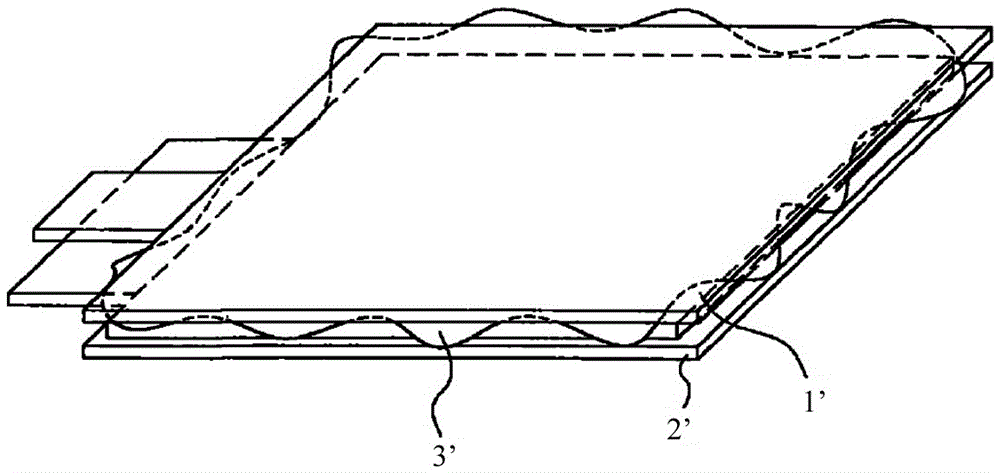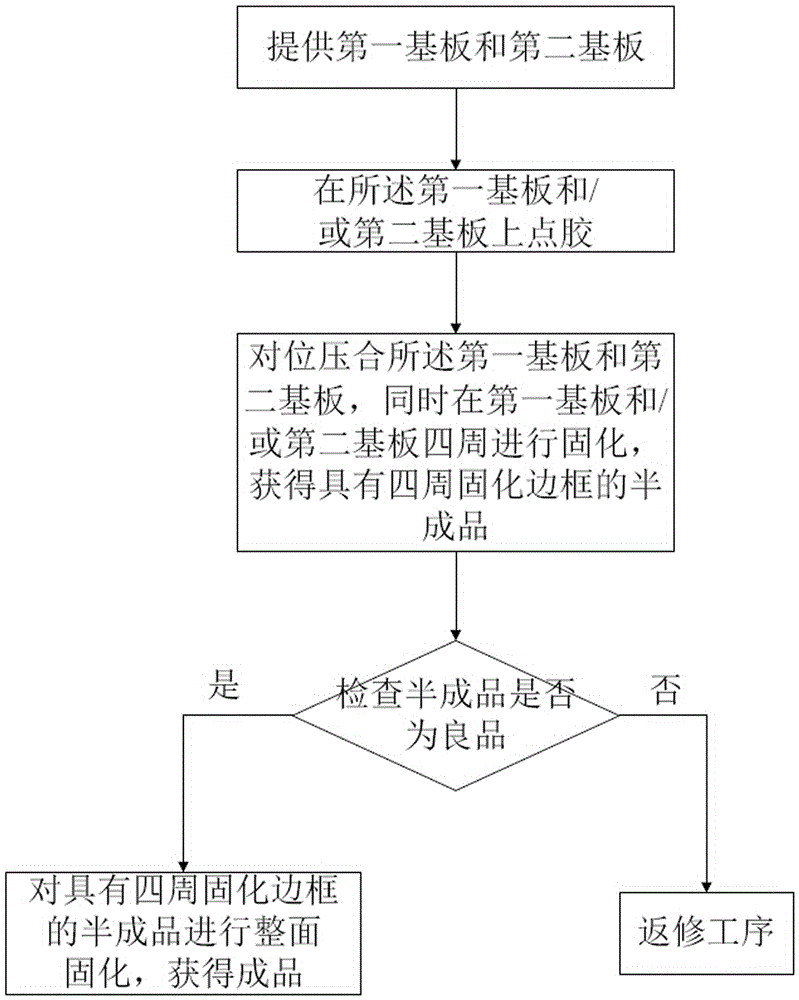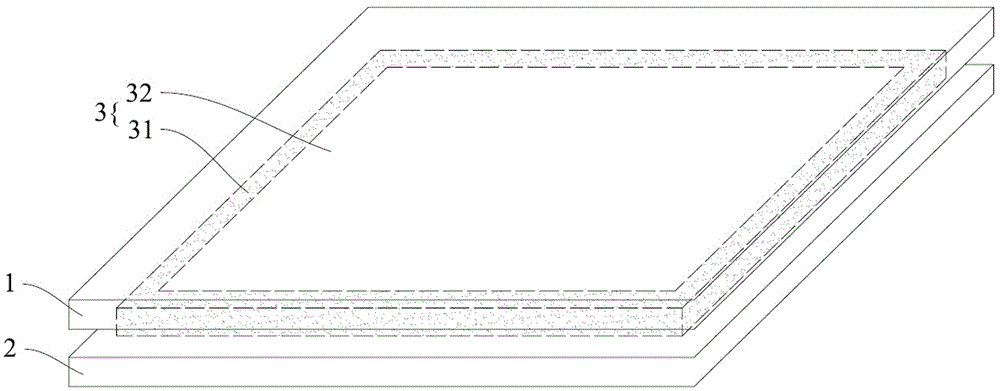Glue laminating process
A technology of colloid and process, which is applied in the field of colloid lamination technology, can solve the problems of bad fog, affecting IR holes, and low yield of colloid lamination, so as to solve the problem of lamination air bubbles, improve lamination accuracy, and shorten production time Effect
- Summary
- Abstract
- Description
- Claims
- Application Information
AI Technical Summary
Problems solved by technology
Method used
Image
Examples
Embodiment Construction
[0023] The present invention will be described in detail below in conjunction with the accompanying drawings and embodiments.
[0024] Please refer to Figures 2 to 4 , the colloid bonding process of a preferred embodiment of the present invention comprises the following steps:
[0025] (1) providing a first substrate 1 and a second substrate 2;
[0026] In specific implementation, the first substrate 1 and the second substrate 2 shown can be a touch screen (TouchPanel, TP), a liquid crystal display module (LiquidCrystalModule, LCM), a glass cover (CoverGlass, CG) or a sensor glass (SensorGlass, SG ), but not limited to this.
[0027] (2) Dispensing glue on the first substrate 1 and / or the second substrate 2;
[0028] During specific implementation, the colloid used may be ultraviolet glue, heat-curing glue, or a combination of the two. The glue coating can be applied on the substrate by screen printing or dot-by-dot printing, but not limited to these two methods.
[0029...
PUM
| Property | Measurement | Unit |
|---|---|---|
| width | aaaaa | aaaaa |
Abstract
Description
Claims
Application Information
 Login to View More
Login to View More - R&D
- Intellectual Property
- Life Sciences
- Materials
- Tech Scout
- Unparalleled Data Quality
- Higher Quality Content
- 60% Fewer Hallucinations
Browse by: Latest US Patents, China's latest patents, Technical Efficacy Thesaurus, Application Domain, Technology Topic, Popular Technical Reports.
© 2025 PatSnap. All rights reserved.Legal|Privacy policy|Modern Slavery Act Transparency Statement|Sitemap|About US| Contact US: help@patsnap.com



